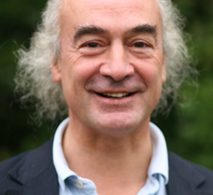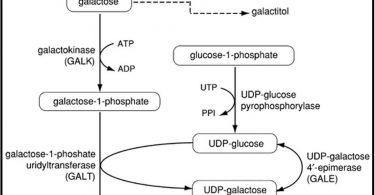THE TISSUE SALTS AND THE NOSODES
Though many will be familiar with the Schuesslerian system of Biochemistry with the use of the twelve tissue salts to restore a state of imbalance in the mineral composition of the cells which comprise our bodies, relatively few know, or deal with, the nosodes outside the homceopathic medical profession. To this end, it will be necessary to examine Dr. Paterson’s paper
in some detail first, before collating his findings with the biochemistry normally associated with the tissue salts.
In our intestinal tracts there exists a species of bacteria called Bacillus coli communis, which, when we are in good health is harmless. Its function is quite simply to assist in the break down of the complex substances produced in the course of digestion in the intestinal tract prior to excretion.
But,when the state which we know as health no longer prevails and we fall ill,then the function of this particular bacillus changes, as does its biochemistry.According to Dr. Paterson, the primary disease originates in the body taken as a whole, rather than in the intestinal tract specifically, for he considersthe change in the bacillus an evolutionary one. In other words, the bacillus changes its nature in an effort to continue to survive. There is some evidence
to suggest that emotional conditions giving rise-to a state of stress within the body is sufficient to give rise to this mutation of the Bacillus coli (2).
Also, Dr. Paterson discovered that the administration of a homoeopathic remedy was often sufficient to trigger off this change in the intestinal tract – yet further evidence of the pathological action of homeeopathic remedies, which some opine are ineffective for a variety of ill-thought out reasons. The visual alteration of the intestinal organism under the microscope, before and after the administration of the remedy in question, is indeed a rebuttal of such criticism. However, Dr.Paterson noted that when this change was induced homoeopathically, the patient, far from being in a state of disease was in a state of well-being ‘consequent upon the administration of the remedy. He regarded the change as one of ‘vital action’ set up in the
patient in response to the remedy, and which some physicians refer to as the ‘Vis medicatrix naturae’. .
The rhetorical question must be: asked at this juncture-is the specific germ the causal agent of the disease, or is it the disturbance in the nature of the ‘vital force’ which characterises the cells within our bodies in their reaction to disease?
Today the concept of ‘vitalism’ is foundering under the onslaught of that which may be termed ‘mechanistic medicine’, which, if carried to extremes will result in the patient becoming a kind of tiresome encumbrance; nevertheless such is the cyclical nature of evolution, it may once more return to claim its rightful place in the healing arts, once this present phase is over.
Though the reader must draw his’ own conclusions on the foregoing rhetorical question, it is generally admitted, since the time of Pasteur, that specific kinds of germs can be related to definite disease states. These latter can be made the subject of laboratory investigations, and the ensuing observations and deductions translated into medical practice.
In words of Dr Paterson:
(i) The specific organism IS related to the disease .
(ii) The specific organism is related to the remedy.
(iii) The remedy is related to the disease.
Having described the normal state of our intestinal bacilli, we must
now go further and examine what organisms are produced when the Bacillus
coli mutates.
Eight main types of intestinal organism emerged from “the investiga-
tion, and are given as follows:
1. Bacillus Morgan ( Bach )
2. “ Proteus ( Bach )
3. “ No.7 ( Paterson )
4. “ Gaertner (Bach )
5. “ Dysenteriae ( Bach )
6. Sycotic Co. ?( Paterson )
7. Bacillus mutabile ( Bach )
8. Bacillus faecalis ( Bach )
The above-mentioned names in brackets are those of the’ discoverers
of these bacilli, and it will be seen that the name of Bach figures prominently. Some will perhaps be surprised to learn that the’ late . Dr. Edward Bach, an eminent pathologist in his own right, was also the discoverer of
| the Bach Flower Remedies, for the investigation of which he relinquished a flourishing medical practice. At this point it is necessary to explain the meaning of the term ‘nosode’for which the reader has been patiently waiting. A nosode is like a vaccine in some respects, being derived from theculture of a particular organism, but containing no actual germs or bacteria. It is used to stimulate the body to produce natural antibodies against infection. Thus, in Homeeopathy, there are nosodes for use in Chickenpox,Whooping cough and Measles to take three well-known examples. So thatthe homeeopathic nosodes, prepared from cultures of the foregoing organisms, and which in the words of Dr. Paterson, are in the nature of a kind ofpotentised vaccine, having the power to restore a disturbed metabolism to health. All the nosodes have been ‘proved’ homeeopathically by assessing their action on healthy volunteers and noting what symptoms became prevalent after administration. The following is a precis of the results which Dr. Paterson obtained by giving these nosodes in homeeopathic potency. 1. Bacillus Morgan. The one word which describes the symptomatology is ‘congestion’; the congestive headache, liver, circulation, and especially the skin are typical of the proving of this nosode. 2. Bacillus Proteus. Though it is not possible to give the picture of this nosode in a word, it is characterised by symptoms which have suddenness of onset, and whichaffect the central nervous system, and which may be associated with a disturbed chloride metabolism. 3. Bacillus NO.7. Here the keynote is: -‘mental and physical fatigue’-a common enough symptomatology these days. 4. Bacillus Gaertner. ‘Malnutrition’, or in the eyes of the Schuesslerian biochemist-‘malassimilation’ figures largely where this nosode is concerned. 5. Bacillus Dysenteriae. ‘Anticipatory nervous tension’ sums up the symptoms arising from the proving of this nosode. 6. Sycotic Co. 2. This was found to be associated with symptoms of irritability, in nervous, mucous and synovial tissue. 7. Bacillus mutabile. This is a difficult one, as it mutates almost as soon as it is cultured, and produces symptoms which alternate, as for example: skin eruptions and asthmatic symptoms. 8· Bacillus Faecalis. This has only been employed infrequently in treatment. We now come to the biochemistry associated with these mutant organisms of the intestinal flora. Here, Dr. Paterson established a relationship between his cultured nosodes and several remedies applied on a homoeopathic basis, of which mention has earlier been made. The relationship between the remedy and the nosode is a subtle one, for it is at once one of complementation and association. |
The following table will illustrate succinctly the relationship between the nosodes and the tissue salts.
Nosode Tissue salt
1. Bacillus Morgan Calc. Sulph.
2. “ Proteus Kali.Mur., Nat. Mur.
3. “ No7 No exact relationship, but potassium dependent
4. “ Gaertner Cal.Flour., Calc.Phos., Kali.Phos., Silica
5. “ Dysenteriae No corresponding tissue salt.
6. Sycotic Co. Nat.Sulph.
7. Bacillus Mutabile Ferr. Phos., Kali.Sulph.
8. Bacillus Faecalis No corresponding tissue salt.
Thus, it can now be seen that no less than ten of the twelve tissue salts were found to have a relationship with the nosodes, which is not a relationship that is generally known. It must be pointed out that in addition to the tissue salts, several very important homoeopathic remedies also have an interrelationship with the nosodes, which is hardly surprising when one recalls the diagrammatic representation of the organism, disease and the remedy given previously.
Dr. Paterson was of the opinion that if a particular set of symptoms were manifest and indicated a remedy specifically, that this should be given in preference to the nosode. However, when the picture was not as in many cases of chronic disease for example, then the requisite nosode can be given together with the remedy associated with it.
Furthermore, the associated remedy can be given in the manner of a ‘drainage’ remedy in the manner developed by the eminent French homoeopath Dr. Leon Vannier. In this case, the nosode is given in a high or intermediate potency ( 30C upwards ), and the associated remedy in low potency. A succinct description of this kind of therapy is given by Dr. E.A. Maury (3).
Let us look now at some of the tissue salts given in the previous table to see if the symptomatology associated with them may be related to that of the nosodes given earlier.
1. CALC. SULPH.
It will be recalled that the corresponding nosode is the Bacillus Morgan
which gave rise to severe skin symptoms on proving, and which by the
homceopathic Law of Similars will cure the same symptomatology’ if it should
be the simillimum. Now, Calc. sulph, is found in the epithelial layer of skin
tissue (4), and has been found of value in the treatment of herpetic skin
eruptions (5). Indeed, should the administration of the Bacillus Morgan nosode
give rise to a phase of temporary aggravation of symptoms, then Calc.sulph.
in low potency can be administered helpfully to assuage what may be a
stage of ‘itchiness’.
2. NAT.MUR.
This tissue salt is the one pre-eminently associated with disturbances
of the chloride metabolism of cells, and it will be remembered that this was
associated by Dr. Paterson with the nosode-Bacillus Proteus. Now, Boericke and Dewey advocate the use of Nat, mur, in low potency as a rational
cure for disturbances in the chloride metabolism (6). Dr. D. M. Gibson gives
a full account of the pharmacology of Nat. mur. in a monograph published
in 1965 (7), in which he maintains that the chloride ions which penetrate
the cell walls are believed to be responsible for the action of salt in increasing
oxidative metabolism. (The student of inorganic chemistry will doubtless
remember that chlorine water is a powerful oxidising agent).
3. SILICA
The keynote of this remedy according to several homceopathic physicians
is: mal-assimilation. It is generally recognised that the therapeutic qualities
of the remedy only appear on potentisation. According to Dr. Gibson(8),
the digestive system is affected with consequent malabsorption of nutritive
material and ensuing debility: The late Dr. Douglli\. Borland in the course
of a series of lectures on “The digestive drugs” given at the Royal London
Homeeopathic Hospital in 1940, considered that Silica in potecy was of
much use to the patient; who suffering from prolonged nervous stress,
produced symptoms of nervous indigestion and loss of appetite.
Such patients very often responded to the administration of Silica.
Another type of patient benefiting from this tissue salt, is the person
who, having suffered a period (generally prolonged) of unsatisfactory physical
conditions-bad feeding for example-now suffers from a state of chronic
diarrhoea. The general condition of the patient is in fact similar the patient
suffering from ‘nervous indigestion, but from a different cause.
Silica, according to Dr. Borland is a: great remedy for children,who
show signs of the intolerance of milk in their feeding habits, again evincing
its action in the sphere of assimilation.
All patients, whether young or old in need of this tissue salt, are characterised by signs of chilliness; it can therefore be regarded quite literally a ‘warming up’ remedy.
NAT. SULPH.
It will be remembered that ‘irritability’ is the key-word attaching to the
provings of Sycotic Co., and when we look at Nat. sulph. we find
that ‘irritability’ manifests itself particularly in the alimentary tract. Dr.
D. M. Gibson in his monograph on Nat. sulph. (9) gives details on the
provings of this tissue salt, and which include: nausea in the mornings often
associated with hiccough, and stomach upsets with a tendency to the regurgitation of ingested food-clear signs indeed of an irritable stomach!
Again, Dr. Borland thought of Nat., sulph, for patients having a very
slow digestive process, and capable of digesting only the simplest of foods.
Associated with this was much nausea and attacks of bilious vomiting and
abdominal colic.
The ‘irritable liver’ with symptoms which may be collated under the
heading of catarrhal jaundice is a symptomatology which often calls for
Nat. sulph. according to Dr. Borland. Indeed Nat. sulph. is one of the great
liver remedies, and is referred to as such in many works on the tissue salts
and in Homceopathy,
5. FERR. PHOS.
It is extremely interesting that this particular tissue salt should be
It is extremely interesting that this particular tissue salt should be
associated with Bacillus Mutabile, which it will be recalled is the bacillus
which goes into mutation almost as soon as it itself is cultured, so making
it a difficult one to investigate. \
From the standpoint of the Schuesslerian biochemist Ferr. phos. is pre-
eminent as an oxygen carrier in our blood, and, as we’ all know, this is
essential to both life and health.
Today, with the ever-pressing problems of pollution, both internal and
external, in respect of our bodies, Ferr. phos. may hold greater importance
than hitherto. We take into our bodies a wide range of environmental pollu-
tants from the atmosphere, water and food and also from drugs and synthetic
additives in our food. All these require metabolism within our bodies, and
the process is a complex one, producing en route intermediate compounds
which themselves have to be metabolised. Thus, what .may be termed our
‘biological oxygen demand’ is ever under: increased pressure, so that it
behoves us to use our oxygen supplies as efficiently as . possible, to which
end Ferr. phos. has always been considered useful in the biochemical method’
of Schuessler.
In this respect, KaIi sulph. is also useful as it assists with the exchange
of oxygen from the red, blood cells to the tissues of our body.
Both of these, tissue salts, and the homceopathic : remedy Pulsatilla, ( Wind Flower ), which contains Kali Sulph, are the remedies associated with Bacillus Mutabile.
As both of the tissue salts are concerned with oxygenation, it is interesting to ask the question; whether the change in the Bacillus Mutabile is associated with a change in the oxidative state, a question not beyond the techniques of modern pathology.
This latter leads quite naturally to the subject of research, for another question arises from the work of Dr. Paterson, and which could well throw much light on the Schuessler system of biochemistry. This question arises from the close relationship which Dr. Paterson derived between the organism, the disease and the remedy. Now, since the mutant organisms are not the ususal ones in the intestinal tract, does their occurrence indirectly indicate the nedd for the tissue salts ?
In other words can we use the production of a mutant strain of intestinal flora as pathological indicator, since Dr. Paterson demonstrated the association of the nosodes and the ten tissue salts, as has been previously indicated? Many times in research, has the occurrence of the abnormal been a pointer to new developments, and in this case where there is one of association, the extrapolation may well be valid.
Unfortunately, the work of late Dr. Paterson with whom his wife Dr. E. Paterson collaborated, has been allowed to lapse following their death, but this is, in itself, no reason why it should not be revived by those who seek to further the true aims of Biochemistry and Homoeopathy.
SUMMARY
The work of Dr. Paterson established a relationship between various organisms occurring in the human intestinal tract in health and disease. These organisms were isolated and cultured to produce a nosode which is in the nature of a homoeopathic vaccine. The nosodes were proved Homoeopathically on healthy human volunteers and their symptoms noted. Associated with these nosodes were several homoeopathic remedies and ten of the twelve tissue salts. A relationship between the organism, the disease and the remedy was established.
The question is asked whether this research may be applicable to establishing by pathological methods, the need for the tissue salts.
REFERENCES
1. J.Paterson, “ The Bowel Nosodes”, The British Homoeopathic Journal, XL,(3), Jully 1950.
2. Dr. A.T.Westlake, Private communication, 1972.
3. E.A.Maury,”Drainage in Homoeopathy – detoxication”, The Health Science Press,1965.
4. J.B.Chapman, “Dr. Schuesslar’s Biochemistry”, revised edition,p.13,1970.
5. Ibid.
6. W.Boericke and W.A.Dewey,”The Twelve Tissue Remedies of Schussler”, second Indian edition.
7. D.M.Gibson, “Natrum muriaticum – a study”, The British Homoeopathic Journal, April 1965.
8. D.M.Gibson “ Silica- a study”, The British Homoeopathic Journal, July 1963.
9. D.M.Gibson,” Natrum Sulphuricum – a study”, The British Homoeopathic Journal, April1968.
Author: D.S.Rawson





